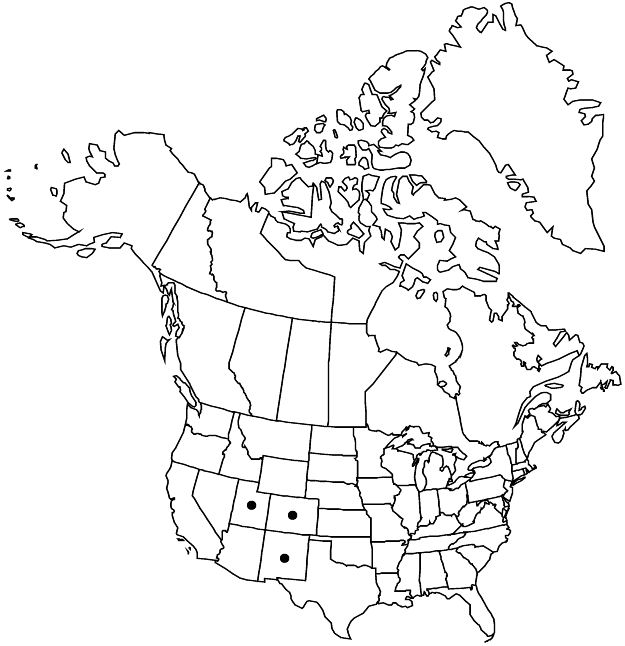Viola canadensis var. scopulorum
Bot. Gaz. 11: 291. 1886.
Plants solitary, 3–14 (–18) cm. Rhizomes not branched. Stems 1–3 (–4). Leaves: basal: petiole 1.1–13.8 cm; blade ovate, 0.7–3.1 × 0.9–3.8 cm, base cordate to subcordate, margins crenate, irregularly crenulate, or serrulate; cauline: stipules oblong to broadly lanceolate, margins entire to erose, apex acute to long-acuminate, occasionally 2-fid or 3-fid or ± truncate; petiole 0.4–6 cm; blade ovate, 1.2–2.8 × 0.8–2.7 cm, base cordate to ± truncate, margins crenulate to serrulate, ciliate or eciliate. Peduncles 1.2–2.9 (–4.2) cm, sometimes glabrous below bracteoles. Flowers: lowest petal 5.5–13 mm. Capsules 2.5–5 mm. 2n = 24.
Phenology: Flowering May–Jul.
Habitat: Moist soil, shaded forests, stream banks, hillsides
Elevation: 1500–3500 m
Distribution

Colo., N.Mex., Utah.
Discussion
E. Brainerd (1921) wrote that after growing a plant of Viola scopulorum for three years received from the type locality, he was convinced of its right to specific status, noting the length of the stem and the size of the capsule, leaf, and seed were but half that of V. canadensis. V. B. Baird (1942) stated that V. scopulorum produces cleistogamous flowers throughout the growing season.
Selected References
None.
Lower Taxa
"thick" is not a number. "narrow" is not a number.